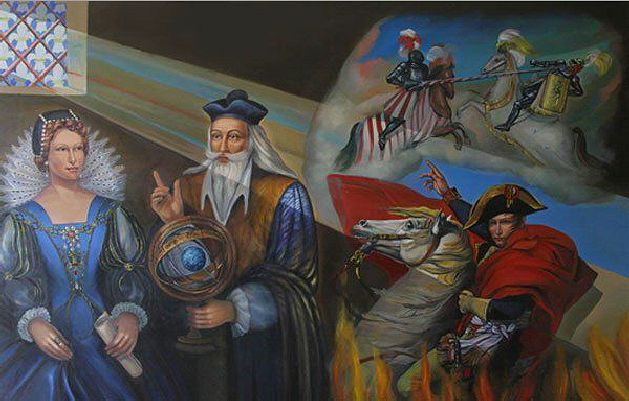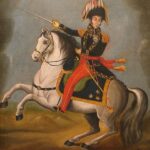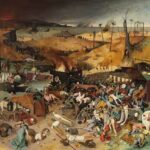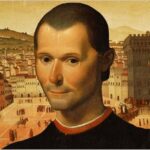![]() The prophecies Nostradamus made in the 16th century have drawn much attention and interest in the Western world. Many in the West may be unfamiliar, however, with the famed Chinese book of prophecy, “Tui Bei Tu”.
The prophecies Nostradamus made in the 16th century have drawn much attention and interest in the Western world. Many in the West may be unfamiliar, however, with the famed Chinese book of prophecy, “Tui Bei Tu”.
Some of the predictions in “Tui Bei Tu” match almost perfectly with those of Nostradamus, particularly one that specifies the year 1999.
We’ll start with brief descriptions of “Tui Bei Tu” and the prophecies of Nostradamus, then we’ll look at the passage in each that refers to 1999 and what it might mean.
“Tui Bei Tu” was written by Li Chunfeng and Yuan Tiangang and has been widely spread in Chinese society since the Tang Dynasty (627–649 A.D.). The atheist, materialist communist regime in China has banned Tui Bei Tu, outlawing the book as “superstition.” But it is well known in Hong Kong, Macau, and Taiwan today.
With a series of 60 surreal drawings, the book is said to contain clues to China’s and the world’s history and future. Each drawing is accompanied by an equally obscure poem describing an event in history. All are arranged in chronological order.
The first 40 drawings depict historical changes through various dynasties. Drawings No. 2 to 9 show major historical events in the Tang Dynasty. Drawings 10 to 14 are predictions concerning the Five Dynasties, a period of about 50 years between the Tang Dynasty and the Song Dynasty during which five would-be successors each took control briefly. Drawings 15 to 20 relate to the Northern Song Dynasty, while 21 to 24 relate to the Southern Song Dynasty. Only two drawings relate to the Yuan Dynasty (No. 25 and 26). The 27th drawing kicks off the Ming Dynasty, and No. 32 wraps it up. No. 33 to 37 are for the Qing Dynasty.
In the last 20 poems, the interval between the events depicted becomes increasingly shorter. Sometimes several poems depict the same events from different angles. It’s like a marathon runner who speeds up as he approaches the final stretch.
Some have said that as many as 55 of the 60 prophecies have been fulfilled. As with Nostradamus’s work, the interpretations of “Tui Bei Tu” are largely dependent on individual perspectives. Some scholars have compared different versions of “Tui Bei Tu” and found the book has been rewritten many times with some variations.
Prophecies of Nostradamus: From the Death of a 16th Century King to the Atomic Bomb
Michel de Nostredame, or Nostradamus, was a French apothecary who lived from 1503 to 1566. He won fame in southern France for fighting outbreaks of the plague, though he was better known as an astrologer and prophet. Between the years of 1555 and 1558, he published a total of almost 1,000 prophetic quatrains.
He divided his quatrains into groups of 100, with each group comprising a chapter called a “century.” Century VII is the exception; it has 42 quatrains instead of 100. The quatrains are written in an obscure style, in ancient French, Latin, and Greek.
Quatrain 35 in Century I seemingly came true on June 28, 1559. The quatrains predicted that a young lion would kill an older lion on the battlefield. This is said to allude to the death of King Henry II of France in a jousting tournament. Nostradamus wrote: “The young lion will overcome the older one, on the field of combat in a single battle; He will pierce his eyes through a golden cage, two wounds made one, then he dies a cruel death.”
A nobleman six years younger than King Henry splintered his lance into two pieces upon hitting the king. One part pierced the king’s eye through his visor and the other drove into his temple. The king suffered for more than a week before dying. Some have said the king and nobleman both had lions on their shields, though that point is uncertain.
Nostradamus’s other predictions have been similarly said to come true in major 20th century events, including the rise of Adolf Hitler, the founding of the United States and its eagle symbol, Napoleon’s impact on history, the French and Russian revolutions, the world wars, and the creation of the atomic bomb.
Nostradamus and the authors of “Tui Bei Tu,” living 1,000 years apart and in vastly different geographical regions and cultural backgrounds, managed to come up with some startling matches in predictions.








